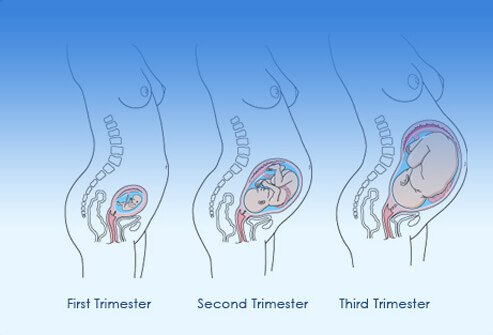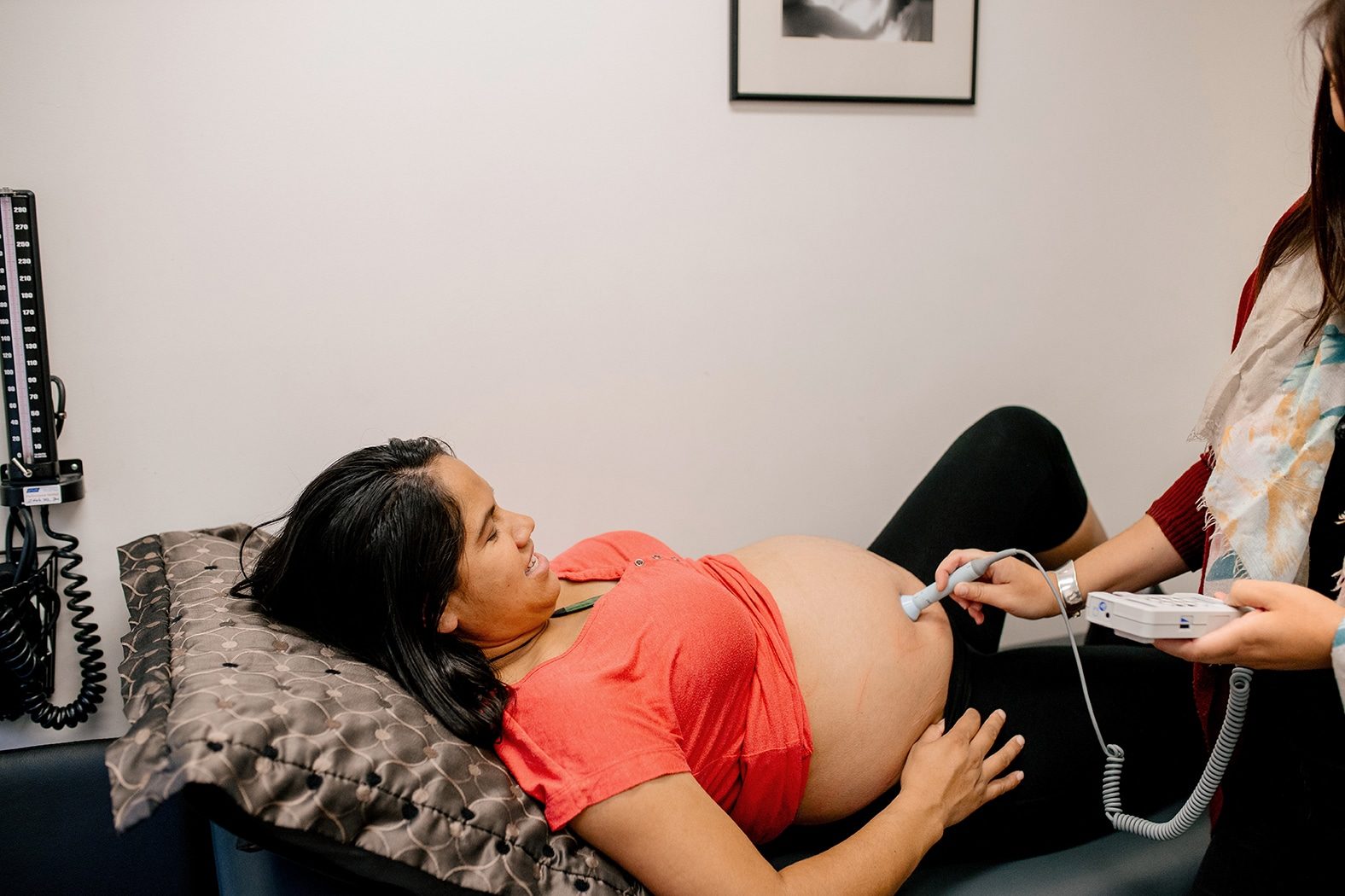Signs of pregnancy will be noticed by most women during this first trimester as there are many hormonal changes occurring. Symptoms can include tiredness, morning sickness, breast tenderness and the need to pass urine more often than usual. Missing a period can be the first sign of pregnancy, and if a pregnancy test is carried out after the period was due the results are likely to be accurate. Sometimes in early pregnancy a small amount of spotting or bleeding is experienced, this is usually normal and caused by the fertilised egg attaching to the lining of the uterus. If concerned, you can talk to your LMC midwife or gp.
This first three months of pregnancy start with the first day of the last menstrual period and include conception. Conception generally happens around fourteen days after the first day of the last period. In this time period the baby develops from a collection of cells, and implants as an embryo on the wall of the uterus. The embryo grows rapidly and receives oxygen, blood supply and nutrition from the developing afterbirth (placenta/whenua) and all this development takes place inside a watertight sac called the amniotic sac. The placenta is an essential organ that provides oxygen and nutrients to your developing baby. It also plays a significant role in the health of your pregnancy. The developing baby is attached to the placenta/whenua by the umbilical cord. In these early stages of pregnancy, although the baby is developing rapidly and is fully formed with all organs already developed by twelve weeks, it is still very small, so a baby bump may not be noticeable to most people until well after twelve weeks of pregnancy. Although changes are not so obvious on the outside, babies are busy developing inside. Babies make sucking movements and swallow the amniotic fluid (waters) that they are floating in, and also move about freely in the amniotic sac, but these movements are not usually felt by the mother just yet. The fingernails and toenails are also starting to develop.
It is not always possible to hear the baby’s heartbeat during this first trimester but midwives may try and listen to the baby’s heartbeat between the tenth and twelfth week of pregnancy using a handheld Doppler (ultrasound) device. This amplifies the baby’s heartbeat so it can be heard by parents. It can be difficult to hear the heartbeat at this stage because of the baby’s position, the baby moving around a lot and the mother’s uterus (womb) still being low in the pelvis.
During this trimester midwives plan midwifery care with the pregnant woman. This includes pregnancy, birth and postnatal care, and a full health assessment will also be carried out. Frequency of visits with the midwife during pregnancy and birth place options are discussed. The midwife can also provide information about the range of pregnancy and parenting education options available. The growth and development of the baby is usually a topic of discussion at these sessions.
ADDITIONAL INFORMATION:
Assessments, tests and screening
Keeping well during pregnancy

